-
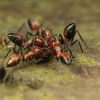 +10 +1
+10 +1'Exploding Ant' Rips Itself Apart To Protect Its Own
High in the treetops of Borneo, there’s an ant with a deadly secret. It can explode. On the outside, it’s just an inconspicuous, brownish-red ant. It lacks large mandibles, cannot sting, and generally seems like easy pickings for any predator with a rumbly in the tumbly. But when these ants feel threatened, they raise up their rumps as a warning, says Alice Laciny, an entomologist with Natural History Museum Vienna in Austria who described the first new species of exploding ant since 1935 in the journal Zookeys.
-
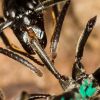 +23 +1
+23 +1These ants have evolved a complex system of battlefield triage and rescue
Ants have an incredible instinct to help their comrades.
-
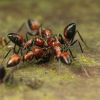 +7 +1
+7 +1'Exploding Ant' Rips Itself Apart To Protect Its Own
High in the treetops of Borneo, there’s an ant with a deadly secret. It can explode. On the outside, it’s just an inconspicuous, brownish-red ant. It lacks large mandibles, cannot sting, and generally seems like easy pickings for any predator with a rumbly in the tumbly. But when these ants feel threatened, they raise up their rumps as a warning, says Alice Laciny, an entomologist with Natural History Museum Vienna in Austria who described the first new species of exploding ant since 1935 in the journal Zookeys.
-
 +23 +1
+23 +1Attenborough and the Empire of the Ants
David Attenborough is in the Swiss Jura Mountains to discover the secrets of a giant. Beneath his feet lies a vast network of tunnels and chambers, home to a huge empire of ants. It is believed to be one of the largest animal societies in the world, where over a billion ants from rival colonies live in peace. Their harmonious existence breaks many of the rules for both ants and evolution, and raises some important questions. Through winter, spring and into summer, David turns detective to find the answers.
-
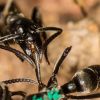 +18 +1
+18 +1These termite-hunting ants lick the severed legs of their friends to treat them
Termite-hunting ants in sub-Saharan Africa treat each other’s wounds by licking them, according to new research. It might sound icky — but the treatment actually saves lives. The ant, called Megaponera analis, specializes in raiding termite nests. These hunts, however, are dangerous: The ants can lose legs or antennas, and sometimes they die. A study last year showed that the ants rescue their injured friends in the battlefield...
-
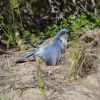 +23 +1
+23 +1Birds Rub Ants on Themselves, and No One Knows Exactly Why
It’s called “anting,” and it is weird. By Eric Grundhauser.
-
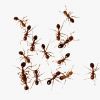 +32 +1
+32 +1Why Those Floating Fire Ant Colonies In Texas Are Such Bad News
Ants didn't take over the world by being stupid and cowardly. Case in point: Rafts of fire ants have been spotted floating around floodwaters in Houston, Texas, colonies banding together to weather super-storm Harvey.
-
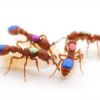 +22 +1
+22 +1Scientists create the first mutant ants
Despite what you might've seen in 1950s monster movies, it's difficult to raise mutant ants. For years biologists have altered the genetics of organisms as varied as mice and rice. Mutant fruit flies are a laboratory staple. But ants' complex life cycle hampered efforts to grow genetically engineered ants — until now.
-
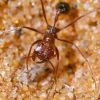 +23 +1
+23 +1Antlion Cone Death Trap
In the Namib desert where the sands can reach a scorching 70 degrees centigrade, very little is able to survive, but the Hotrod Ant can amazingly thrive and even forage for food. In this tense encounter an unsuspecting Hotrod Ant has strayed in AntLion territory and faces the ultimate test of survival.
-
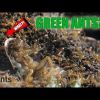 +17 +1
+17 +1Green ants?
Where did these green ants come from? Watch Yellow Crazy Ants as they hunt, subdue, protect, and deal with their food on a daily basis.
-
 +16 +1
+16 +1A terrifying threat from Tropical Storm Cindy: Floating masses of deadly fire ants
The notoriously tough insects are just as dangerous when they're wet as they are dry, according to Alabama officials.
-
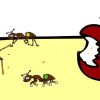 +20 +1
+20 +1Ants on Stilts Help Show Bugs Have "Pedometers"
Stilt-walking and half-amputated ants helped scientists solve the mystery of how the insects return straight home, even after extremely twisty trips.
-
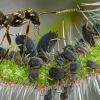 +25 +1
+25 +1Ant species cultivates coffee for accommodation
Scientists on the island of Fiji have discovered a type of ant that plants, fertilizes and guards its own coffee crops. The industrious creatures have been perfecting their agricultural know-how for millions of years.
-
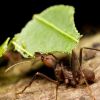 +33 +1
+33 +1Who Invented Agriculture First? It Sure Wasn't Humans
Ants in Fiji farm plants and fertilize them with their poop. And they've been doing this for 3 million years, much longer than humans, who began experimenting with farming about 12,000 years ago.
-
 +13 +1
+13 +1All Queens Must Die
On Santa Cruz Island, they killed the cows, sheep, and bees. Now it’s time to finish the job. By Ryan Bradley.
-
 +23 +1
+23 +1Cockroach Giving Birth While Being Devoured by Fire Ants
-
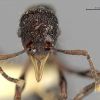 +15 +1
+15 +1Devil Frog Vomits Up a New Ant Species
Sometimes scientists make discoveries in the strangest of places. Like the belly of a poison frog.
-
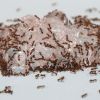 +32 +1
+32 +1Meet the worst ants in the world
Argentine ants have invaded every continent in just one century.
-
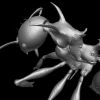 +30 +1
+30 +1Two new highly adorned spiky ant species discovered in New Guinea
The distinctive dorsal spines found on two new species of highly adorned Pheidole ants may help to support the ants' massive heads, according to a study published July 27, 2016 in the open-access journal PLOS ONE by Eli Sarnat, Georg Fischer and Evan Economo from the Okinawa Institute of Science & Technology Graduate University, Japan.
-
 +32 +1
+32 +1Ants invented farming 60 million years ago
After the age of the dinosaurs came to an end some 65 million years ago, a ‘tribe’ of ants known to scientists as the Attini decided to give up life as hunter-gatherers and become farmers instead, according to a new genetic study. It was an astonishing move that humans only managed to accomplish some 10,000 years ago. The ants, native to South America, began farming fungus that grew on decomposing wood, setting off an evolutionary revolution.
Submit a link
Start a discussion




















